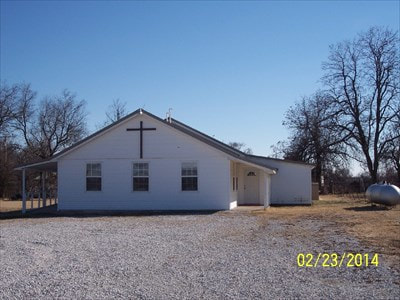
It was separated from the Barry County on December 31, 1838, and established as a county under its present name, given in honor of the often fictionalized American Revolutionary War veteran Sergeant John Newton the fellow of Sergeant William Jasper of Fort Moultrie fame. Newton County was originally contained in Crawford County and afterward in Barry County. These early settlers were sometimes visited by the Native Americans who had recently been relocated from Georgia to the Indian Territory, a few miles to the west, and who periodically came into the area on hunting expeditions. McCord was involved in organizing Neosho Presbytery, a Cumberland Presbyterian congregation at New Salem Campground, on May 15, 1837. Anthony Bewley was appointed to the Neosho and Granby circuit, establishing the first permanent churches in Six Bulls. The earliest known religious effort dates to 1836, when Methodist Circuit riders visited the area and held meetings in log cabins. In these years the region was called "Six Bulls", a colloquialization of "six boils", referring to the large streams that flowed through the area - Shoal Creek, Center Creek, Indian Creek, Spring River and North Fork.īy 1835, at least three schools had been established along Shoal Creek, and a teacher named Billingsley taught near Neosho. McCord, who settled near Walbridge Spring with Levie Lee and founded the town Neosho twelve miles (19 km) to the west. Ritchie, who founded the town of Newtonia near Oliver's Prairie, and John W. McInturf built a corn mill, the first mill of any kind in the region. In 1831 he was joined by Nathaniel Turner, John Smith, Joseph Ross, Campbell Pure, Blake Wilson, Levi Lee, Carmac Ratcliffe, and George McInturf. His nearest neighbors were in Springfield, sixty miles to the east.

The first of these settlers was Lunsford Oliver, who arrived from Tennessee in 1829 and located near Shoal Creek, giving his name to Oliver's Prairie.

Starting in the late 1820s, settlers of English, Scottish, German, Welsh, and Scots-Irish ancestry began moving into the area. It is known locally as the "Gateway to the Ozarks", and since 1957 as " the Flower Box City". Nicknamed "City of Springs", Neosho has long served as an agricultural center and, since 1888, is home of the Neosho National Fish Hatchery, the oldest in the National Fish Hatchery System. It was incorporated as a municipal government in 1878. It was also ideal for the later white settlers, who founded the city in 1833. The springs attracted varying cultures of Native American inhabitants for thousands of years. The name "Neosho" is generally accepted to be of Native American (most likely Osage) derivation, meaning "clear, cold water", referring to local freshwater springs. Neosho lies on the western edge of the Ozarks. With a population of 12,590 as of the 2020 census, the city is a part of the Joplin, Missouri Metropolitan Statistical Area, a region with an estimated 176,849 (2011) residents.

Neosho ( originally or) is the most populous city in Newton County, Missouri, United States, which it serves as the county seat.


 0 kommentar(er)
0 kommentar(er)
